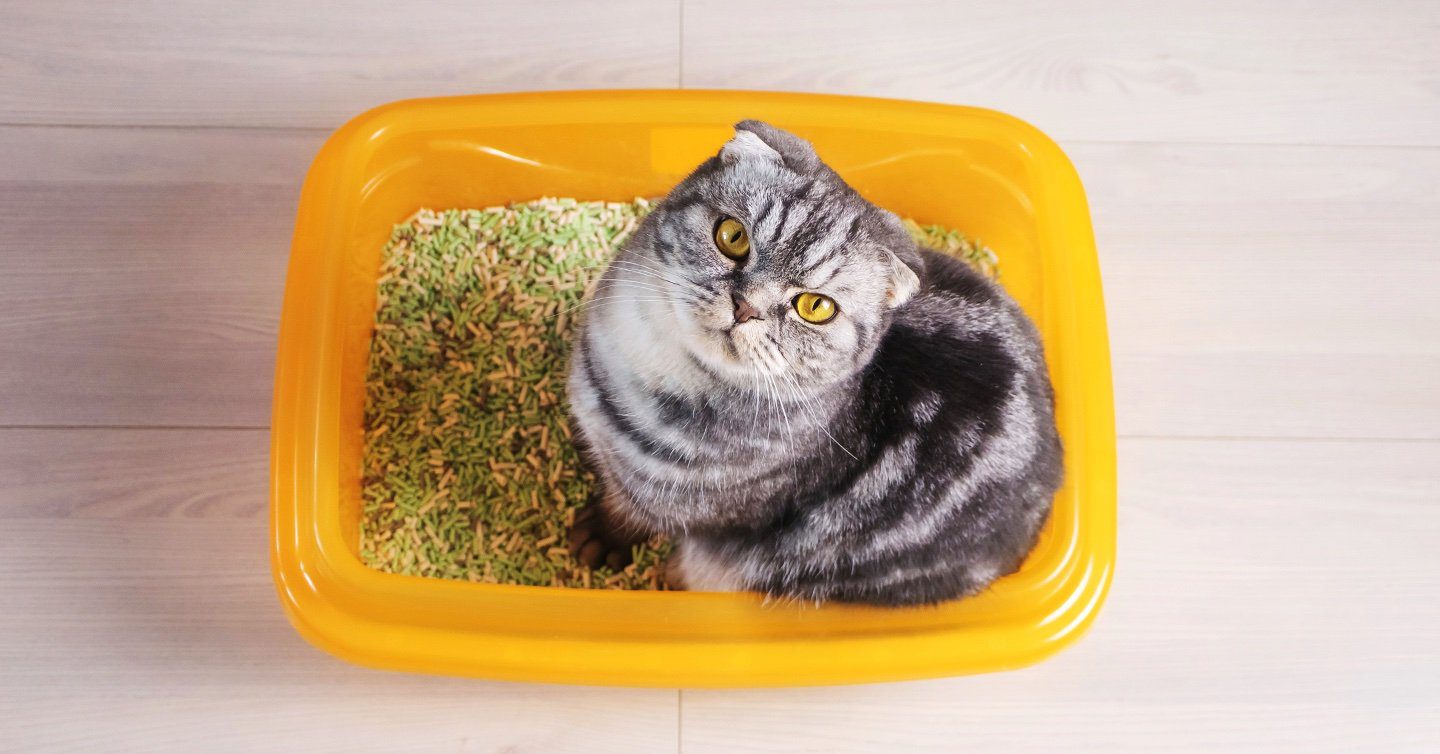Cat urinary tract infections (UTIs) can affect felines of any age or size. If your cat is peeing outside of their litter box – such as less urine or no urine at all, or they’re straining to urinate – it could be a sign that your cat is suffering from a urinary issue. Though sometimes harder to spot in kittens who are still litter training, changes in your cat’s bathroom habits are one of the biggest indicators something is wrong.
Let’s dive into other signs of urinary tract infections in cats, why they happen, and how you can get your kitty feeling better in no time.
What is a cat UTI?
A cat UTI is an infection in the urinary bladder that most often occurs when bacteria travel up the urethra and into your cat’s bladder, growing and reproducing to cause the infection. A UTI is one of several diseases of the lower urinary tract in cats grouped into a broader category of Feline Lower Urinary Tract Disease, or FLUTD. FLUTD can be caused by other urinary conditions including uroliths (bladder stones), urethral obstruction, or Feline Idiopathic Cystitis.
While UTIs are painful and uncomfortable, the good news is that they’re not contagious and often easily curable with antibiotics. Let’s find out how you can prevent, identify, and treat a UTI in your feline friend.
How do cats get UTIs?
As mentioned, cats get UTIs from bacterial infections in their bladder or urethra. More rarely, UTIs can be caused by fungal infections. Other causes of cat UTIs include:
- A suppressed immune system in cats with other concurrent illnesses, like diabetes, Cushing’s syndrome, or cancer
- Bladder stones
- Loss of urethral tone, ectopic ureters, or conditions where the bladder fails to completely empty
- Recent placement of a urinary catheter for any reason
Which cats are most at risk for UTIs?
While any cat can get a UTI, some cats are more susceptible to infection than others. For example, older cats and cats who form bladder stones diabetes mellitus are more at risk for developing a UTI. The cat breeds thought to most commonly suffer from bladder stones include Himalayans, Persians, and Siamese cats. In addition, some hormonal conditions, such as Cushing’s disease, are at higher risk for UTI.
While not a UTI, it’s important to know that male cats are at risk for a life-threatening condition called urethral obstruction, as their urethras are longer and thinner than those of female cats. Due to a more narrow passage, the male urethra is more likely to be blocked. The signs of a urethral obstruction can mimic the signs of a UTI, so if your male cat is ever straining in the litter box, it’s important to seek veterinary attention immediately.
What are the symptoms of UTIs in cats?
Common symptoms of cat urinary tract infections or other bladder disorders include:
- Frequent urination, but only peeing small amounts at a time
- Urinating outside of the litter box
- Straining or inability to urinate
- Crying in pain while peeing
- Increased licking of the urinary opening
- Cloudy or bloody urine
- Drinking more water than usual
Make sure you’re always watching out for changes in your cat’s peeing (and drinking!) habits to stop a UTI in its tracks. And if you know that your cat has been diagnosed with bladder stones or has any other risk factors, it’s always a good idea to keep an extra eye on the litter box and your kitty’s toileting habits.
How are cat UTIs diagnosed?
If you suspect your feline friend might be suffering from a UTI, you should take them to the vet as soon as possible. While there, your vet will collect a urine sample, usually by inserting a needle into the bladder and removing urine with a syringe (this procedure is called cystocentesis). Thankfully, this is a quick and relatively painless process, so it should be easy to keep even the fussiest cats calm during the procedure.
Urine is collected in order to test it, which is called a urinalysis. The veterinary staff will analyze your cat’s urine under a microscope, looking for blood, bacteria, inflammatory cells, crystals, or any other abnormalities. The urine will also be tested on a strip that can detect any inflammation, sugar, how concentrated the urine is, as well as several other parameters. These tests will often determine if your cat has a UTI or another urinary problem. In some cases, a urine culture and sensitivity, where urine is sent off to a laboratory to see if bacteria grow in it and if so, what antibiotics the bacteria are sensitive to, may be ordered. In other cases, x-rays (radiographs), bloodwork, and abdominal ultrasound may be recommended.
How are UTIs in cats treated?
Uncomplicated UTIs are typically easily treated with antibiotics. Some vets will also prescribe pain medication and probiotics to balance normal flora. If your cat has a UTI due to another underlying disorder, such as bladder stones or diabetes, then additional treatments will be prescribed to treat those disorders. It is important to treat underlying disorders or risk the UTI coming back. Additional treatments can include a diet change, treatment for diabetes or Cushing’s, or surgery in some cases.
How much does it cost to treat cat UTIs?
If your cat is diagnosed with a simple UTI, you’ll only have to cover the cost of the vet visit, laboratory tests, and the antibiotics — which could be around $150-$200. However, if your cat has a complicated UTI that requires additional treatment, you might be looking at costs well into the thousands.
How can you help prevent your cat from getting UTIs?
The best thing you can do to prevent your cat from getting UTIs is to feed them an appropriate amount of a high quality diet, and keep your cat thin. Thin, athletic cats usually have less health problems than their overweight, sedentary counterparts. It’s also important to maintain an impeccably clean litter box that your cat likes to use, and have enough litter boxes for the number of cats in your home (experts recommend 1 more than the number of cats). In addition, keep up with routine vet visits to ensure their urinary tract health is in tip-top shape.
If your cat’s diagnosed with a urinary tract infection, pet insurance can help you say ‘yes’ to the best care, even when it’s costly. Check out how one of Pumpkin’s cat insurance plans can help you cover the cost of a UTI and more.
For more resources or advice:
*Pumpkin Pet Insurance policies do not cover pre-existing conditions. Waiting periods, annual deductible, co-insurance, benefit limits and exclusions may apply. For full terms, visit pumpkin.care/insurancepolicy. Products, discounts, and rates may vary and are subject to change. Pumpkin Insurance Services Inc. (Pumpkin) (NPN#19084749) is a licensed insurance agency, not an insurer. Insurance is underwritten by United States Fire Insurance Company (NAIC #21113. Morristown, NJ), a Crum & Forster Company and produced by Pumpkin. Pumpkin receives compensation based on the premiums for the insurance policies it sells. For more details visit pumpkin.care/underwriting-information and pumpkin.care/insurance-licenses.




